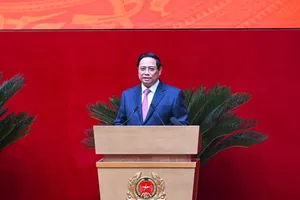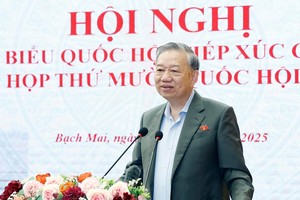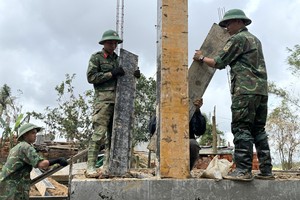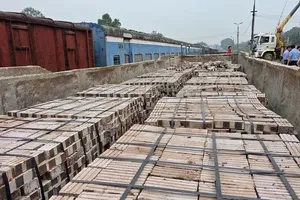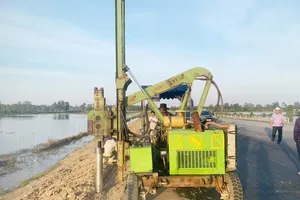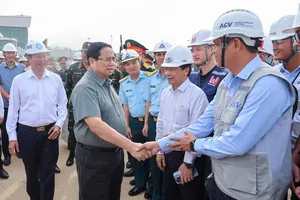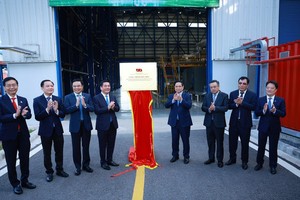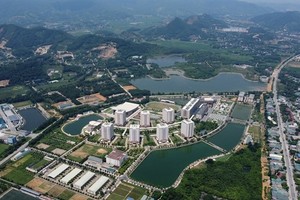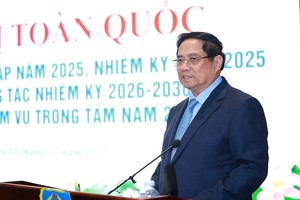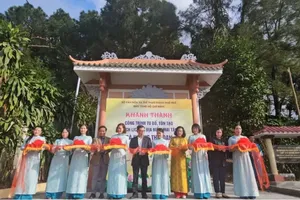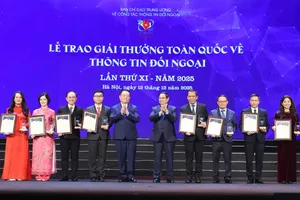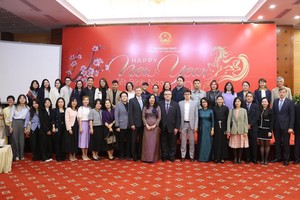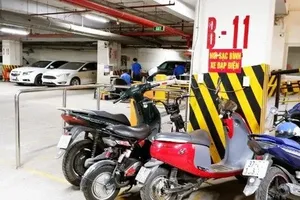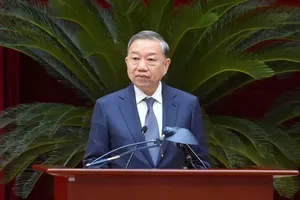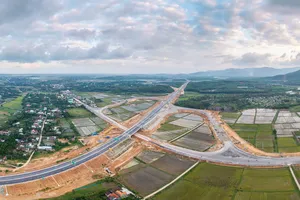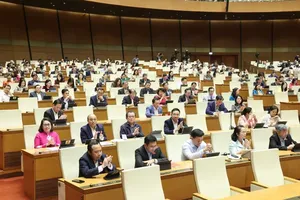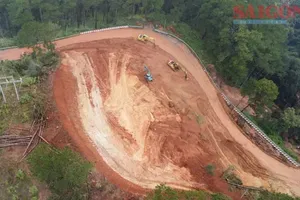In the Northern region alone, three national key projects and dozens of large-scale Category A developments will be kicked off. This major event not only celebrates the 80th anniversary of National Day but also delivers a powerful message of the Government’s and local authorities’ strong commitment to investing in the nation’s future.
Urgent infrastructure projects
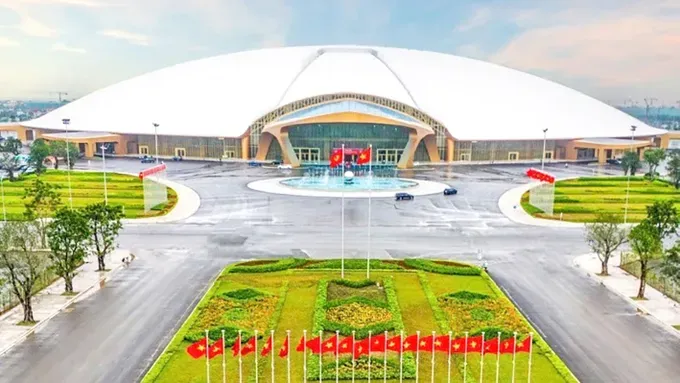
Most of the projects to be inaugurated on August 19 aim to address urgent national needs in energy, transportation, healthcare, environment, and technology while also shaping a modern, synchronized infrastructure capable of supporting long-term development goals. A highlight among them is the commissioning of Unit 1 of the Hoa Binh Hydropower Plant Expansion Project, with a capacity of 240 MW. The project, which has a total investment of VND9,222 billion (US$350.8 million), is expected to generate an average of 490 million kWh annually.
Mr. Bui Phuong Nam, Director of Power Project Management Board No. 1, said that the project aims to increase peak load capacity for the national power grid, particularly during periods of high demand. In addition to stabilizing the national grid’s frequency, the project helps reduce overall operating costs. Importantly, it also maximizes the use of surplus water discharged during flood season for electricity generation, thereby minimizing resource waste. Despite challenging weather conditions and complex terrain, Vietnam Electricity (EVN) and construction teams made tremendous efforts to complete the project in time for its inauguration on August 19.
In the field of culture and commerce, the National Exhibition and Convention Center, officially opened during this period, is expected to become a major highlight in Hanoi’s infrastructure development. Covering 90 hectares with a total investment of over VND7,000 billion (US$266.4 million), this national key project ranks among the largest exhibition complexes in the world.
The project’s timely completion holds particular significance, as it enables the hosting of a major national event, the Exhibition of Social-Economic Achievements, commemorating the 80th anniversary of National Day.
Hanoi People’s Committee Chairman Tran Sy Thanh remarked that the facility is fully equipped to host high-level political, cultural, and international events. He emphasized that it offers the capital city new opportunities to expand cultural exchanges, strengthen investment and tourism promotion, and serve as a driving force in building a more modern, civilized Hanoi.
Alongside the two standout projects mentioned above, other constructions inaugurated on August 19 across the Northern region show a strong breakthrough in infrastructure aimed at improving the quality of life. Notably, Yen Xa Wastewater Treatment Plant in Hanoi, with a capacity of 70,000 cubic meters per day, is expected to significantly improve the quality of rivers and lakes, addressing long-standing pollution issues, protecting public health, and contributing to sustainable urban development.
Similarly, the inauguration of Central Obstetrics Hospital No. 2 in Hanoi with 300 beds and Nghe An Oncology Hospital offering 1,000 beds will help ease the burden on existing facilities. These hospitals also expand access to high-quality healthcare services, particularly in specialized treatment and maternal and child care.
In addition, two major technology projects by Viettel Group, with a total investment of VND27,000 billion (over US$1 billion), will also be inaugurated during this period. These strategic infrastructure developments are not only designed to meet domestic demands but also lay a critical foundation for Vietnam’s deeper integration into the global value chain in the fields of digital technology, artificial intelligence, and data security.
Transportation as a catalyst
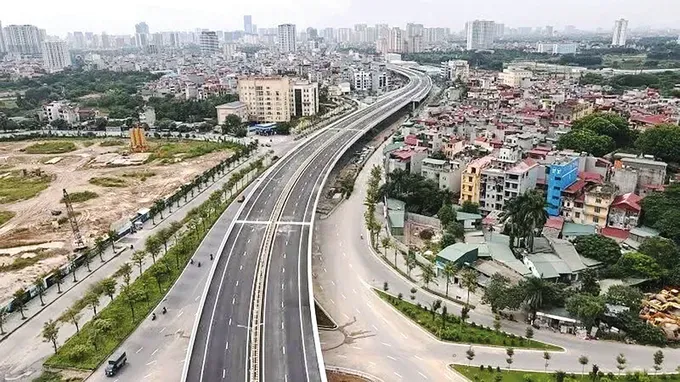
Among the projects simultaneously launched and inaugurated, the transportation sector took center stage with 59 developments. Leading the list in terms of investment scale is the Gia Binh International Airport project with a total investment of VND120,839 billion (US$4.6 billion). The project aims to upgrade the airport to a 4E classification, capable of accommodating the world’s largest and most modern aircraft.
With a projected design capacity of approximately 5 million passengers per year by 2030 and 15 million passengers along with 1 million tons of cargo annually by 2050, Gia Binh International Airport is planned to become a major aviation hub for the Northeast region. The project aims to ease congestion at Noi Bai International Airport and serve as a key driver of infrastructure, urban development, tourism, and commerce in Bac Ninh Province and surrounding areas. It will also be connected to the Lao Cai–Hanoi–Hai Phong railway line, as well as the seaports of Hai Phong and Quang Ninh, creating favorable conditions for freight transport and regional trade.
According to Vice Chairman of the Bac Ninh Provincial People’s Committee, Dao Quang Khai, Gia Binh International Airport is a national key project and will serve as a gateway for the APEC 2027 summit. The project has received special attention from the Party, the State, the National Assembly, and the Government, along with a series of preferential policies to facilitate its implementation. In recent months, Gia Binh Commune has coordinated with relevant agencies to complete land compensation procedures for the construction, implement resettlement projects, and ensure all necessary conditions for commencing and executing the project on schedule.
Another major project with regional significance in the Northern region is component project 3 of the Ring Road No. 4 project in the capital region. Spanning over 112 kilometers, the project carries a total investment of VND56,293 billion (US$2.1 billion). It has been designated a strategic transport route, acting as a critical 'development lever' to connect Hanoi with its satellite cities, ease inner-city traffic congestion, and stimulate socio-economic growth in the surrounding areas. Once completed, the project will significantly relieve pressure on Ring Road 3, which serves only the central urban core and is currently operating at approximately 2.5 times its intended traffic capacity, often experiencing severe congestion during peak hours.
Another key transport project expected to enhance regional connectivity and development is Phase 2 of the Dong Dang–Tra Linh Expressway. Implemented under the public-private partnership (PPP) model, the project has a total investment of over VND11,200 billion (US$426 million) and a planned length of 121.06 kilometers.
According to Mr. Hoang Duc Tho, Acting Deputy Director of the Cao Bang Provincial Transportation Works Construction Investment Project Management Board, the project management unit and local authorities have made every effort to accelerate site clearance. Preparations for the groundbreaking ceremony are now essentially complete, and Phase 2 of the project is ready to begin construction. Once completed, the expressway will meet transportation demands by linking the country’s political and economic centers with northeastern mountainous provinces, key economic zones, national tourism sites, and industrial parks. It will play a vital role in driving socio-economic development, ensuring national defense and security, and safeguarding territorial sovereignty along the border.
Deputy Minister of Construction Nguyen Danh Huy stated that the newly planned routes are being designed to expressway standards, with speeds ranging from 80 to 100 km/h, in anticipation of rapidly growing transport demand over the next decade. Many construction units and local authorities are working intensively in three rotating shifts per day for four teams, actively addressing issues related to land clearance and administrative procedures.
However, he emphasized that without effective management, even large-scale projects can have low exploitation efficiency. Therefore, the Ministry of Construction will enhance oversight of quality, progress, occupational safety, and environmental protection and, most importantly, will work to prevent losses and waste, ensuring the gradual completion of a modern, efficient transport network.
According to Mr. Bui Xuan Cuong, Vice Chairman of the Ho Chi Minh City People’s Committee, many of the projects launched or inaugurated during this period are long-awaited key infrastructure initiatives, including the HCMC–Moc Bai Expressway, the Dinh Intersection Interchange, and the renovation of the Doi Canal. The city has mobilized significant resources and allocated trillions of dong for compensation and site clearance to ensure timely implementation.
Commencing and completing major infrastructure projects on the occasion of the August Revolution and National Day (September 2) carries profound political and social significance. It reflects Ho Chi Minh City’s firm commitment to fast and sustainable development. These efforts also serve as a meaningful gift to the people of the city in celebration of the nation’s important holiday.

